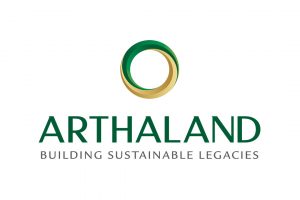Tracking real estate growth in the Asia-Pacific

Investor interest for real estate in the Asia-Pacific (APAC) region has been building for a number of years now, with property markets in Tokyo, Singapore, and Sydney retaining strong demand and economies like Vietnam and the Philippines showing glimmers of hope.
The disruption and uncertainties created by the COVID-19 pandemic have stalled this growth, but things are likely to change in 2022.
“Optimism across the Asia-Pacific region continues to gather momentum and investors will have a clear appetite to expand their portfolios. Transaction volumes are recovering back to their pre-COVID highs, and asset operating performances remain in a cyclical upswing,” Terence Tang, managing director, Capital Markets & Investment Services Asia at real estate services firm Colliers International said in the company’s 2022 Global Investor Outlook report.
This is not to say that the pandemic has not left an impact. In fact, industrial and logistics assets are attracting the most attention in the region, as more than 20% of investors anticipate capital value gains of 10%-20% in value-add I&L assets in 2022, supported by “tailwinds and large-scale economic transformation,” according to Colliers.
“Based on our 2022 Global Investor Outlook, pent-up demand and delayed transactions will translate into momentum next year. However, investors face an increasingly complex and competitive marketplace, colored by new regulations and COVID-19 uncertainties. With the amount of dry powder readily available, offices in Tier 1 cities are seen as safe-haven assets that offer an attractive route to deploy capital,” said Tony Horrell, head of Global Capital Markets at Colliers.
This echoes the recent PricewaterhouseCoopers (PwC) research finding that investment volumes are targeting mainly assets in established gateway cities, as investors seek safety in economically stable and liquid markets.
“Office has been the go-to asset class for many years, but its popularity has suffered lately as investors question its staying power in the age of corporate work-from-home policies. At the same time, many investors are convinced that the impact will be limited in Asia and so are now taking contrarian bets, focusing on well-located, good-quality assets,” PwC said.
“The surging popularity of logistics as an asset class is due to a combination of factors: structural undersupply of high-quality assets, the evolution of more sophisticated supply chains, and the rapid growth in e-commerce retailing, catalyzed recently by pandemic lockdowns. Transaction volumes have boomed this year, but investor appetite is undiminished despite ongoing yield compression,” it added.
The retail sector, which has seen an already steep decline that had started even before the pandemic, is suffering the drawbacks of this development. Negative sentiments have been brewing regarding conventional retail assets, however, PwC said that at the right price, any asset can become attractive.
“The sector seems to have hit that point around the middle of 2021, as third-quarter retail transaction volumes spiked,” the firm said.
Colliers’ research found that investors see significant potential for the appreciation and repurposing of retail assets, with around a third of the investors who are mulling retail allocations targeting opportunistic (including change of use) investments.
Hotels are also an opportunistic target, with 38% of investors looking at this sector. Both hotel and retail sectors offer good opportunities in cities with large domestic markets, like Japan, Australia and Korea.
Specialized assets, particularly data centers, life sciences and healthcare, are expected to help boost investment volumes in 2022, with student housing also poised for a comeback as Australia, the region’s main market, opens up to international visitors.
“This interest in alternative assets will continue to grow in most Asian markets, as investors seek new avenues of growth and returns amid the changes brought about by ongoing technological evolution and healthcare needs,” said Colliers’ Mr. Tang.
On the residential side, PwC found that weak economic fundamentals, combined with rising inflation, make the residential sector appealing to institutional capital. The Asia-Pacific region’s growing multi-family sector, especially in the leading markets of Japan, Australia, and China, are seeing large influxes of capital.
According to Colliers, in Japan, multi-family and built-to-rent properties has been a well-established sector that has long attracted foreign core capital, but markets like Australia are seeing an emerging asset class with development opportunities.
“Built-to-Rent is essentially following the development of new infrastructure, which is a strategy we recommend across all asset classes. You need to look at what and where governments are building, the fundamentals of the land and invest in assets you can repurpose if required,” said John Marasco, managing director, Capital Markets & Investment Services, Australia & New Zealand at Colliers.
The Colliers report also shows that ESG (environmental, social, governance) considerations remain prominent among investors, with nearly three in four surveyed globally integrating environmental factors into their strategies. Investors are increasingly willing to “invest with intent” as a means of future-proofing their assets and responding to stakeholder and societal pressures requiring them to respond to the climate crisis.
Colliers expects ESG to continue to become a strong focus in APAC, as government and corporate tenants begin demanding it from developers. — Bjorn Biel M. Beltran




